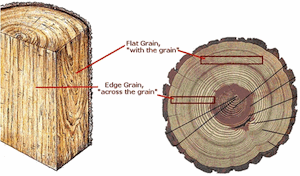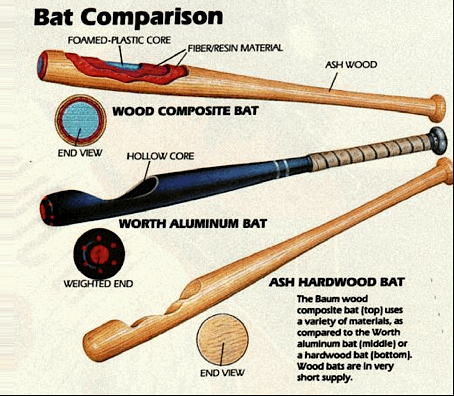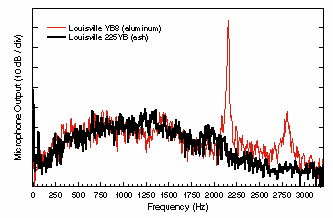America’s Pastime
Baseball has been identified as America’s Pastime because during the late 19th and early 20th century it was probably the most widely played sport in the country. Indeed, it carries historical significance for our nation, something that many people can identify with – either having played the sport, or as an interested observer. Perhaps the most visible and crucial tool in baseball is the bat – the offensive weapon with which runs are scored.
BYOB
As a kid, many of us raced to the ballpark to ask to be batboys for the teams. One of the real reasons was to have the opportunity to ask for a cracked or broken bat if this would happen during the game. We would take the bat home, nail it together, and then add layers of our dads’ electrical tape to cover every part of the crack that might show. At times, the tape extended from the knob up into the bat trademark. For many of us, these were the only baseball bats we had access to until we joined a formal team. But, even then, we still might bring along our “prize” bat and use it instead of what the team provided. I don’t recall that we were ever asked to give up our “pine tar” substitute. But, we were often expected to “bring your own bat” (BYOB – I know that I’m from the sticks, but what were you thinking?), and of course, glove.
Baseball Bats
Baseball bats historically were made from various woods, with ash being one of the most popular because of it hardness. Most of us remember the admonition to “make certain the trademark is up” to reduce the chances of a broken or cracked bat because of hitting along the wrong grain of the wood. The trademark/logo is most likely the last  thing one looked at before getting ready for the pitch. This was important because bat toughness is up to 30% higher when contact is made on the flat-grain face versus contact made on the edge-grain face. Because the edge-grain face contact is parallel to the dense latewood growth rings of the wood (tree), the impact forces are transferred solidly across the diameter of the bat barrel. Trademarks/logos are placed on the flat-grain surface to give the batter an orientation as to which way the bat should be held.
thing one looked at before getting ready for the pitch. This was important because bat toughness is up to 30% higher when contact is made on the flat-grain face versus contact made on the edge-grain face. Because the edge-grain face contact is parallel to the dense latewood growth rings of the wood (tree), the impact forces are transferred solidly across the diameter of the bat barrel. Trademarks/logos are placed on the flat-grain surface to give the batter an orientation as to which way the bat should be held.
The Rise of the Aluminum Bat
The long and short of this is that baseball bats made of wood can, and will, break and shatter, resulting in costly replacement or injury to those in the vicinity whether they be players, coaches, or spectators. As a result, the demand was for bats that lasted longer. And with that, the aluminum bat entered the baseball scene in 1970 (although a patent was issued to William Shroyer for metal bats in 1924).
But, like most other sports, baseball was not without its controversies (then or now), and one that continues relates to the bats that are used to collide with the baseballs. The major controversies relate to safety and record-keeping issues. Aluminum bats have a higher “exit speed ratio,” or the speed at which the ball comes off the bat at such high velocities that the pitcher may not be able to get out of the way in time. Along with the speed comes greater distances that the ball travels – hence, the issue with record keeping. Wooden, metal alloy, and more recent composite bats, are generally permitted in amateur baseball, but not in professional baseball.
While safety and record-keeping are issues related to baseball bats that create considerable discussion, it was the sound of the ball being struck that piqued my interest as a hearing scientist. I was familiar with discussions related to the fact that the sound of the bat striking the ball was different. I had experienced this myself in making the transition from wood (as a semi-pro baseball player) and later to aluminum alloy bats (as a fast pitch softball player). For this posting, I was not concerned about the level of the sound, but curious as to what it was in the frequency composition that created this distinction in the sound.
The Sound of the Bat
Wood vs. Metal
Aesthetically, wooden bats are generally preferred to metal, both for their traditional appearance and for their satisfying traditional “crack,” far superior to alloy bats’ hollow “ping.”
Figure 1 shows a plot of a microphone recording of the impact sound of a bat held at the handle and struck with a baseball at approximately the sweet spot. The wood bat sound has a relatively smooth frequency spectrum similar to a broadband noise resulting from a short impact. The metal alloy bat sound has a similar smooth frequency spectrum, except for two very prominent peaks; one around 2200 Hz, that is more than 60 dB above the noise floor, and the other around 2800 Hz.
The reason for this difference is that the barrel of an aluminum bat is essentially a hollow cylinder, resulting in several unique cylindrical vibration modes not found in wood bats. For most single-walled aluminum bats, the “ping” frequency is around 2000 Hz. For most double-walled bats, it is around 1500 Hz, and for some recent composite bats, it is as low as 1000 Hz.

Figure 1. Spectra of bat sounds when striking a baseball: wood bat (black), and aluminum bat (red). The energy peak of the aluminum bat gives rise to its distinctive “ping” sound.
Reference
- Russell, D.A., Physics and acoustics of baseball & softball bats
Wayne Staab, PhD, is an internationally recognized authority in hearing aids. As President of Dr. Wayne J. Staab and Associates, he is engaged in consulting, research, development, manufacturing, education, and marketing projects related to hearing. His professional career has included University teaching, hearing clinic work, hearing aid company management and sales, and extensive work with engineering in developing and bringing new technology and products to the discipline of hearing. This varied background allows him to couple manufacturing and business with the science of acoustics to bring innovative developments and insights to our discipline. Dr. Staab has authored numerous books, chapters, and articles related to hearing aids and their fitting, and is an internationally-requested presenter. He is a past President and past Executive Director of the American Auditory Society and a retired Fellow of the International Collegium of Rehabilitative Audiology.
**this piece has been updated for clarity. It originally published on August 19, 2013






